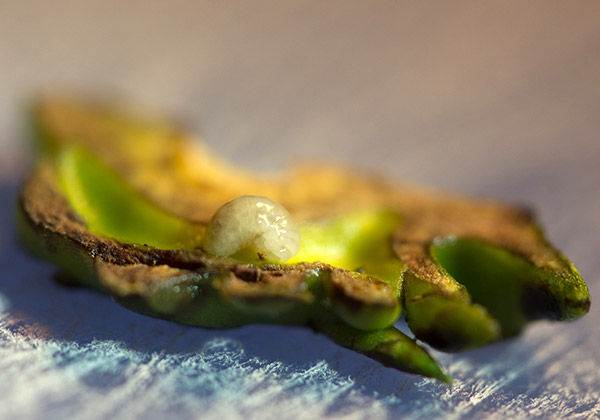Knopper Galls- 08.18.13
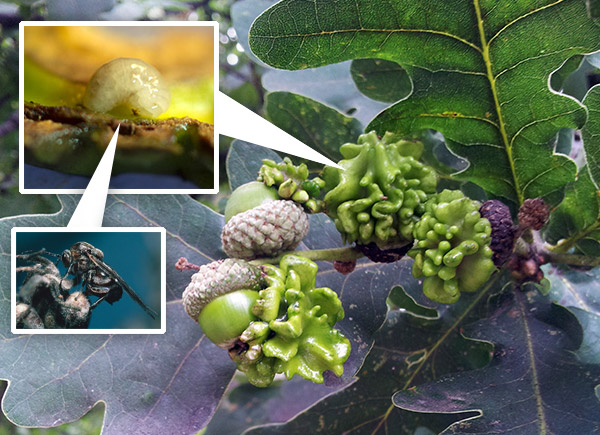 Here’s the latest from NOTCOT’s London-based editor and resident zoologist, Justine Aw.
Here’s the latest from NOTCOT’s London-based editor and resident zoologist, Justine Aw.
As we move into late summer, fruits and nuts seem to be forming everywhere in all sorts of shapes and colors. While walking through London, these oddly-shaped green acorns caught my eye, with their ridges, knobs and slightly sticky appearance. On closer inspection, most of the acorns were covered with these intricate, ridged growths, called Knopper Galls. The galls result from a chemical reaction in response to the gall wasp (Andricus quercuscalicis), which lays its eggs on the developing acorns. The shapes and textures of the resulting galls are fascinating (and quite variable). The degree of ridging on the gall is thought to be related to the number of larvae competing within the gall and we found as many as three separate galls on a single developing acorn. Their name “Knopper Galls” comes is thought to be derived from the English word ‘knop’, meaning “a small rounded protuberance, boss, stud, button, tassel or the like” and German ‘knoppe’ meaning “a kind of felt cap or helmet worn during the 17th-century”.
Galls like the ones we found occur on the Pedunculate or Common Oak tree (Quercus robur), but the wasp also requires a second oak species, the Turkey Oak (Quercus cerris) in order to complete its life cycle. Like aphids, the wasp undergoes both a sexual and asexual components of its life cycle. The knopper galls we observed are part of the agamic (female only) generation. Only adult females will emerge from the Knopper galls in the spring and these females will go on to lay their eggs on the catkins of the Turkey Oak. It is from these small conical galls that a sexual generation of male and female wasps will emerge, mate and produce further knopper galls. As a result, knopper galls are only found where both Common and Turkey Oaks grow. While galls have a negative effect on the reproduction of the trees, they don’t appear to harm other aspects of the tree’s health and in a typical biological twist, the wasps themselves are also often parasitized by a number of hyperparasites! You can find out more at ARKive, The Wildlife Trusts and Hedgerow Mobile, but for now see more pics (and my dissection) on the next page!
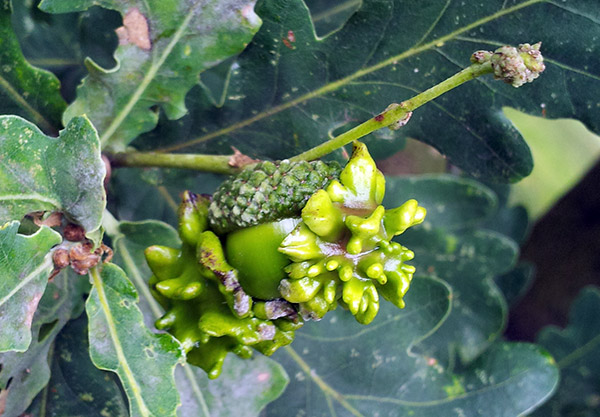
Multiple galls forming on a single acorn suggest that there are several eggs and larvae on these acorns.
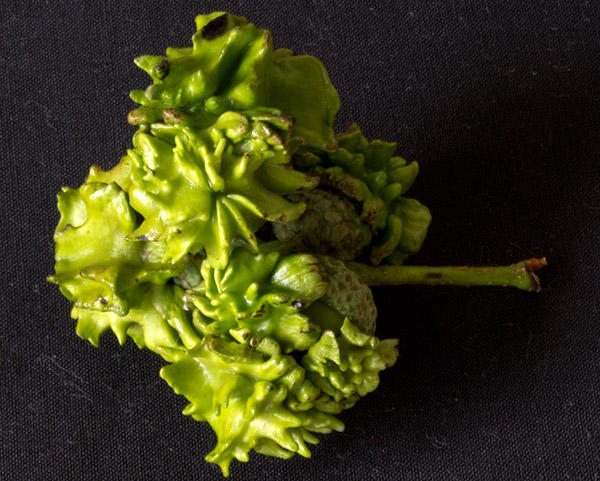
Most acorns on a given branch were covered in galls, as in fact were most of the Common Oak trees.
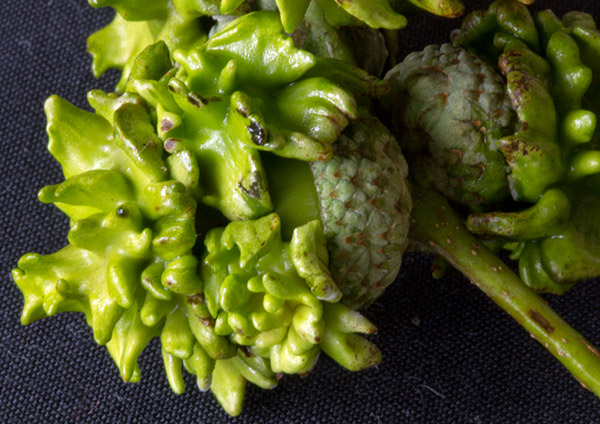
The galls themselves are intricate structures, exuding a slightly sticky and greasy substance.
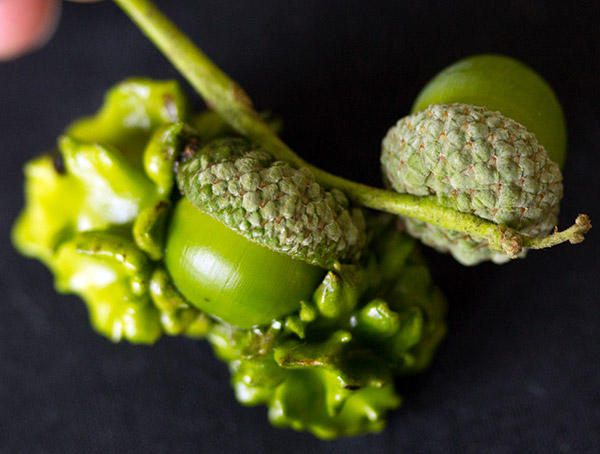
Acorn with multiple galls beside a healthy, unaffected acorn.
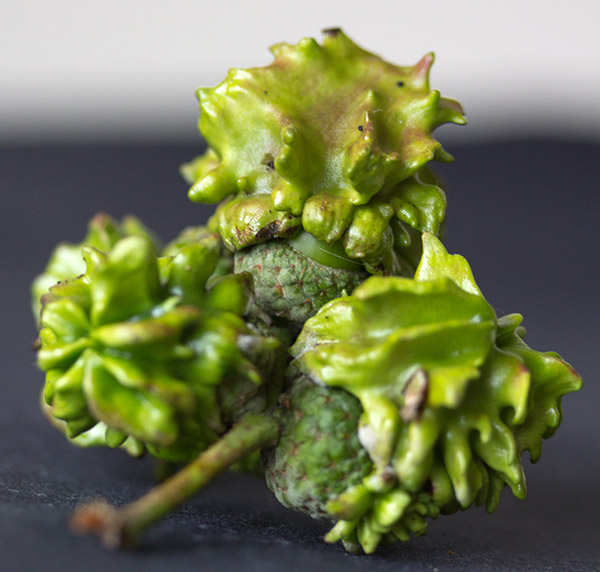
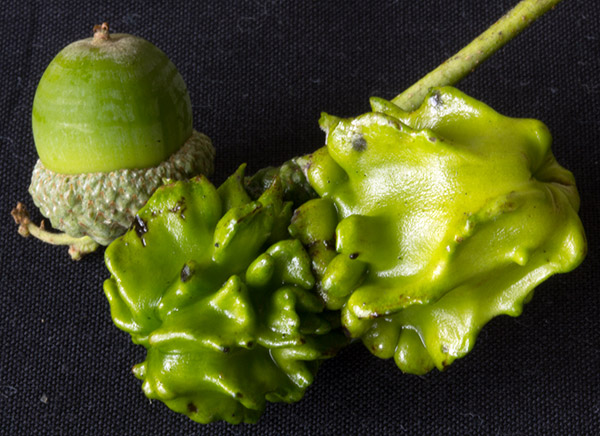
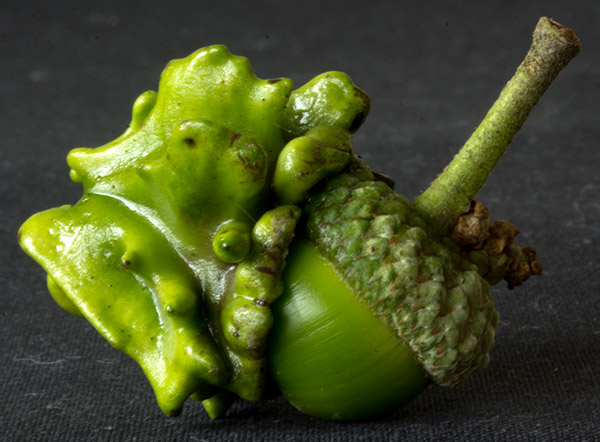
As the acorn matures, the gall too would dry and turn brown, dropping to the ground in the early autumn. The larval wasp would then continue to develop over the winter, to emerge in spring as an adult female. She would go on to lay her eggs on the catkins of the Turkey Oak, which would form galls containing a smaller sexual generation of both male and female wasps.

The gall forms between the cup and acorn.
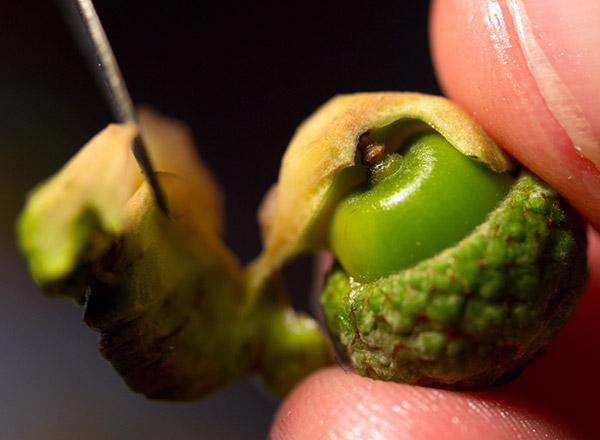
Much of the acorn is simply concealed by the fleshy gall.
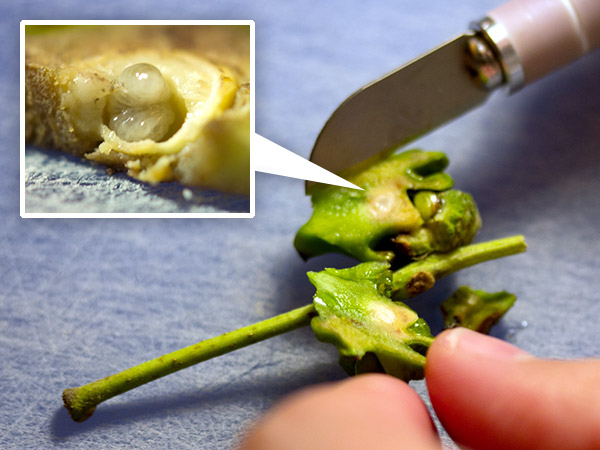
Revealing the interior of the fleshy gall.
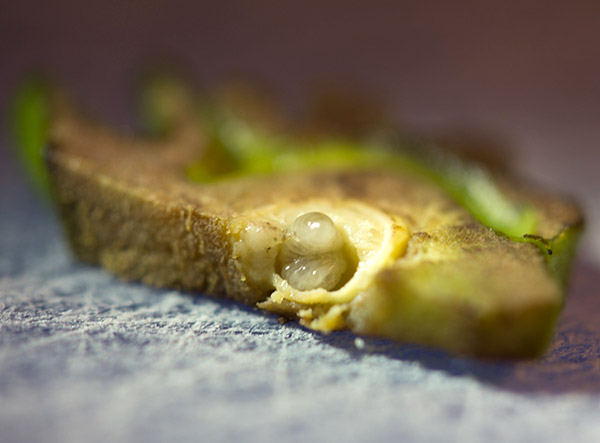
The tiny larval wasp revealed. If conditions are suitable, adult wasps emerge from the galls the following spring.
